- Home
- Quizzes
- My Quiz Activity
- Newsletters
- Sports Betting
- MY FAVORITES
- Add Sports/Teams
- SPORTS
-
NFL
- NFL Home
- Arizona Cardinals
- Atlanta Falcons
- Baltimore Ravens
- Buffalo Bills
- Carolina Panthers
- Chicago Bears
- Cincinnati Bengals
- Cleveland Browns
- Dallas Cowboys
- Denver Broncos
- Detroit Lions
- Green Bay Packers
- Houston Texans
- Indianapolis Colts
- Jacksonville Jaguars
- Kansas City Chiefs
- Las Vegas Raiders
- Los Angeles Chargers
- Los Angeles Rams
- Miami Dolphins
- Minnesota Vikings
- New England Patriots
- New Orleans Saints
- New York Jets
- New York Giants
- Philadelphia Eagles
- Pittsburgh Steelers
- San Francisco 49ers
- Seattle Seahawks
- Tampa Bay Buccaneers
- Tennessee Titans
- Washington Commanders
-
MLB
- MLB Home
- Arizona Diamondbacks
- Atlanta Braves
- Baltimore Orioles
- Boston Red Sox
- Chicago White Sox
- Chicago Cubs
- Cincinnati Reds
- Cleveland Guardians
- Colorado Rockies
- Detroit Tigers
- Houston Astros
- Kansas City Royals
- Los Angeles Angels
- Los Angeles Dodgers
- Miami Marlins
- Milwaukee Brewers
- Minnesota Twins
- New York Yankees
- New York Mets
- Oakland Athletics
- Philadelphia Phillies
- Pittsburgh Pirates
- San Diego Padres
- San Francisco Giants
- Seattle Mariners
- St. Louis Cardinals
- Tampa Bay Rays
- Texas Rangers
- Toronto Blue Jays
- Washington Nationals
-
NBA
- NBA Home
- Atlanta Hawks
- Boston Celtics
- Brooklyn Nets
- Charlotte Hornets
- Chicago Bulls
- Cleveland Cavaliers
- Dallas Mavericks
- Denver Nuggets
- Detroit Pistons
- Golden State Warriors
- Houston Rockets
- Indiana Pacers
- Los Angeles Clippers
- Los Angeles Lakers
- Memphis Grizzlies
- Miami Heat
- Milwaukee Bucks
- Minnesota Timberwolves
- New Orleans Pelicans
- New York Knicks
- Oklahoma City Thunder
- Orlando Magic
- Philadelphia 76ers
- Phoenix Suns
- Portland Trail Blazers
- Sacramento Kings
- San Antonio Spurs
- Toronto Raptors
- Utah Jazz
- Washington Wizards
-
NHL
- NHL Home
- Anaheim Ducks
- Arizona Coyotes
- Boston Bruins
- Buffalo Sabres
- Calgary Flames
- Carolina Hurricanes
- Chicago Blackhawks
- Colorado Avalanche
- Columbus Blue Jackets
- Dallas Stars
- Detroit Red Wings
- Edmonton Oilers
- Florida Panthers
- Los Angeles Kings
- Minnesota Wild
- Montreal Canadiens
- Nashville Predators
- New Jersey Devils
- New York Islanders
- New York Rangers
- Ottawa Senators
- Philadelphia Flyers
- Pittsburgh Penguins
- San Jose Sharks
- Seattle Kraken
- St. Louis Blues
- Tampa Bay Lightning
- Toronto Maple Leafs
- Vancouver Canucks
- Vegas Golden Knights
- Washington Capitals
- Winnipeg Jets
- NCAAF
- NCAAM
- Boxing
- Entertainment
- Lifestyle
- Golf
- MMA
- Soccer
- Tennis
- Wrestling
- More Sports
- RESOURCES
- My Account
- YB on Facebook
- YB on Twitter
- YB on Flipboard
- Contact Us
- Privacy Policy
- Terms of Service
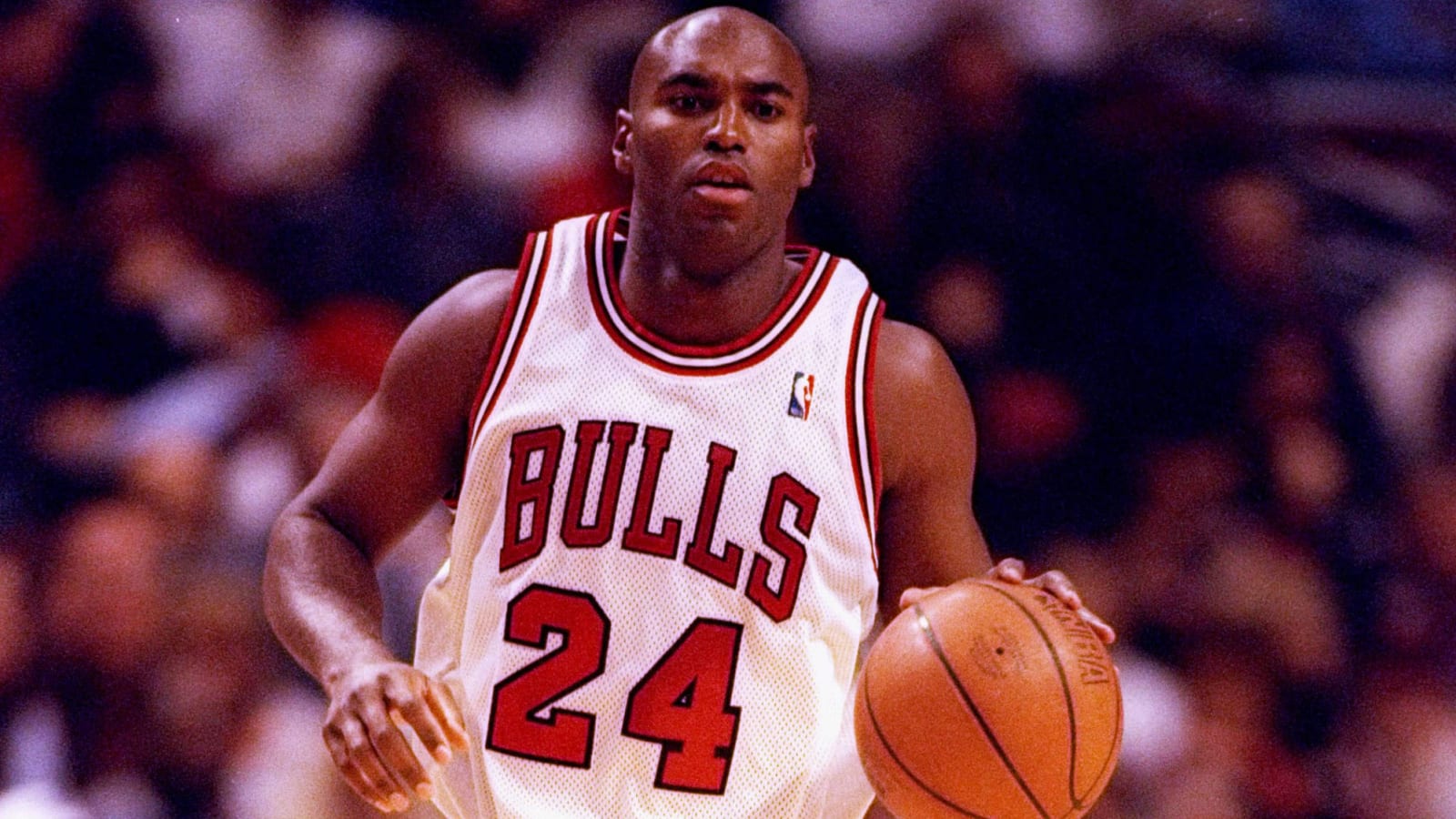
Who are all these other guys in 'The Last Dance'?
ESPN's 10-part documentary, "The Last Dance," offers an embarrassment of riches for younger and older NBA junkies alike. For the former, it's a chance to experience in-depth the intensity of Jordan-mania and how his once-in-a-lifetime talent turned the already growing sport into a worldwide phenomenon. For those of us who were there, the documentary is a finely tuned nostalgia machine triggering frequent "remember so-and-so" outbursts. In the interest of letting you youngsters in on the old-school fun, here are some quick bios on the second-tier (or lower) names that turn up throughout each episode.
Who are all these other guys in 'The Last Dance'?

ESPN's 10-part documentary, "The Last Dance," offered an embarrassment of riches for younger and older NBA junkies alike. For the former, it was a chance to experience in-depth the intensity of Jordan-mania and how his once-in-a-lifetime talent turned the already growing sport into a worldwide phenomenon. For those of us who were there, the documentary served as a finely tuned nostalgia machine triggering frequent "remember so-and-so" outbursts. In the interest of letting you youngsters in on the old-school fun, here are some quick bios on the second-tier (or lower) names that turned up throughout the episodes.
Sam Bowie
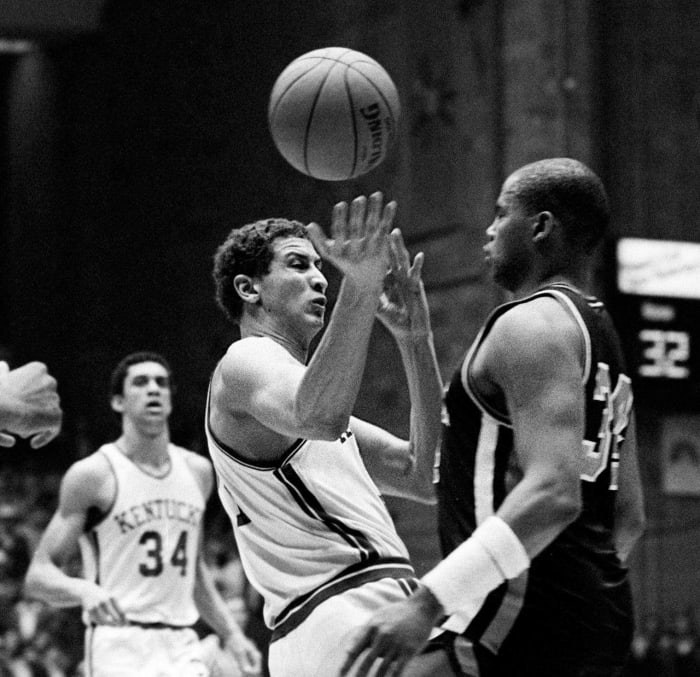
The standout center from Kentucky entered the 1984 draft in pain, unbeknownst to the Portland Trail Blazers, which held the coveted second pick in a stacked class. The NBA was a big man’s league back then, and Bowie knew it, so the 7-foot-1 goliath concealed his physical discomfort from his potential suitors (residual pain, no doubt, from the stress fractures that forced him to miss two whole seasons in college). Portland, having picked future Hall of Fame swingman Clyde Drexler the year before, passed on Michael Jordan and Charles Barkley to take a potential great whose career wound up being derailed by injuries. That Portland team went on to make two Finals appearances in the early 1990s, and, oh, what a difference a Jordan or a Barkley would’ve made.
Tim Floyd

A name that strikes dread in the casserole-masquerading-as-pizza-clogged hearts of Bulls fans the world over (and there were never more Bulls fans than when the club won its sixth title in a decade), Tim Floyd cameos early in the documentary as Phil Jackson’s presumed successor. The Iowa State coach’s NCAA success did not translate to the pro game – not even a little bit. The first post-Jordan season was a disaster, led by holdovers Toni Kukoč and Ron Harper. Help was on the way via blue-chip ’99 draftees Elton Brand and Ron Artest, but the organization struck out over the next two years, opting for busts like Eddy Curry while passing on future studs like Joe Johnson, Zach Randolph and Jason Richardson. Floyd was out of his depth as a pro coach and resigned in 2002 after compiling a record of 49-190.
Bill Wennington

The 7-foot Montreal native is a familiar face to fans who scanned the Bull’s bench on occasion, or, when he got in the game, fretfully speculated as to whether starting center Luc Longley was hurt again. Wennington never played more than 15 minutes when Jordan was around, but he was a big guy who could tag in when Longley or Rodman needed a breather. He provided a bit of hustle, some valuable fouls when called upon and became enough of a bench-bound folk hero that Chicago-area McDonald’s briefly served a Beef Wennington burger (single beef patty with Canadian bacon, cheese, onions and barbecue sauce on a sesame seed bun).
Sam Smith
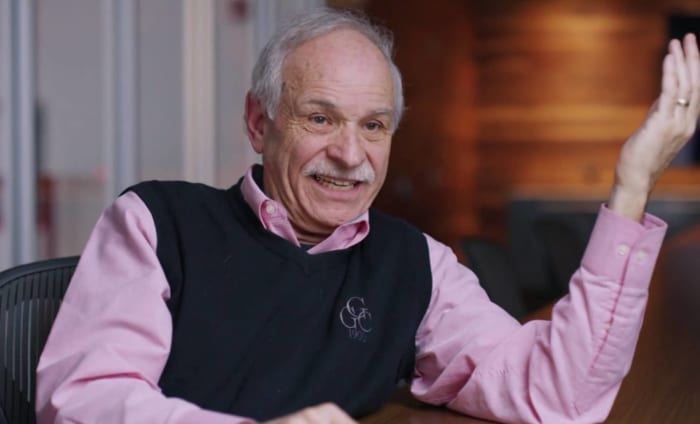
If you’ve read any pro basketball coverage over the last few decades, you should be familiar with Sam Smith. With “The Jordan Rules," his bestselling account of the Bulls’ first champion run in 1991, the former beat writer for the Chicago Tribune was the first of his fourth estate colleagues to delve into the team’s behind-the-scenes drama — most of which revolved around His Airness. Smith painted a tough, occasionally unflattering portrait of a player driven to win at any cost, to the extent that he socked a teammate (Will Perdue) and berated others for falling short of his exacting standards. While this was nothing new in the realm of competition, the stories chipped away at Jordan’s meticulously cultivated kid-friendly façade. Fortunately the Bulls kept winning, which smoothed over any raw feelings and allowed Smith to continue on as the Trib’s Bulls reporter. In 2012, Smith received the prestigious Curt Gowdy Media Award from the Naismith Memorial Basketball Hall of Fame.
Kevin Loughery

The answer to the trivia question, “Who was Michael Jordan’s first professional coach,” Kevin Loughery was a familiar face and voice to basketball fans throughout the 1980s for calling NBA games for CBS. He also found his way back to coaching, and the playoffs, with the Washington Bullets and the Miami Heat. He’d mentored young superstars (namely Bernard King for the Nets and Dominique Wilkins for the Hawks) prior to Jordan and even spent a season coaching a veteran Phil Jackson in New Jersey. After a run with King and Moses Malone in Washington during the late ‘80s, Loughery was once again in charge of a talented young core with the early ‘90s Miami Heat, which boasted Glen Rice, Steve Smith, Grant Long and Rony Seikaly.
Rick Telander

Telander, longtime senior columnist at the Chicago Sun-Times and former Sports Illustrated staffer, is no stranger to the Windy City faithful. But he never found the national prominence of Mike Wilbon or Tony Kornheiser even though he helped usher in the era of the shouty sports show in the 1990s via the syndicated “The Sportswriters on TV." Telander deserves a bigger stage: He wrote one of the best books on basketball with “Heaven Is a Playground” and took early aim at the NCAA’s exploitative practices in 1990’s “The Hundred-Yard Lie." Here’s hoping his presence on one of the most-watched sports documentaries of all time gives him a boost.
Mark Eaton
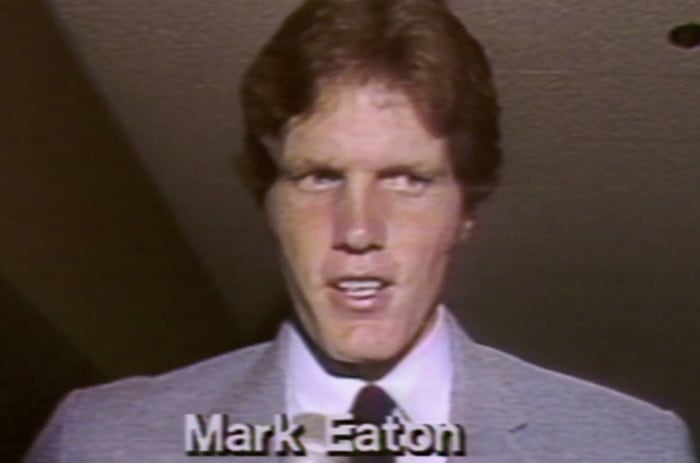
Early in “The Last Dance” we see archival footage of a couple of NBA personalities being queried as to Jordan’s ability to carry a team to contention. One, understandably, is two-time champ and soon-to-be Hall of Famer Walt “Clyde” Frazier. The second is Mark Eaton, a physical freak of a center whose rim-protecting dominance is nowhere near as celebrated as it should be today. The Utah Jazz lifer still holds the record for most blocks in a season (456) and blocks per game for his entire career (3.5). Alas, by the time the Jazz was facing the Bulls for the NBA title in ’97 and ’98, Eaton had been replaced by the far less intimidating/proficient Greg Ostertag.
"The Jordanaires"

As “The Last Dance” makes painfully clear, when Michael Jordan hit Chicago in 1984, the Bulls were the least respected pro sports franchise in the city. They were a mishmash of washed-up All-Stars and stat-stuffing ball hogs. But Norman Dale be damned, it’s a five-men-on-the-court-at-all-time league. These, ladies and gentlemen, were (some of) your Jordanaires (named for the vocal quartet that once performed with Elvis): Hall of Famer George “Iceman” Gervin, shoot-happy Notre Dame standout Orlando Woolridge, proficient sixth man Quintin Dailey, Pistons punching bag Dave Corzine, “Travelin’ Man” Rod Higgins (pictured, he once played for four teams in one season) and Gene “Gene Banks” Banks. When Jordan couldn’t score, rebound, assist, steal, block or turnover, these, and many other pro talents, were on the court to fill in as contractually required.
Sidney Moncrief

The NBA was not yet a global phenomenon when this 6-foot-3 shooting guard out of Arkansas terrorized the league’s backcourts with his stifling defense and, in his mid-‘80s prime, 20-points-per-game scoring. Moncrief did not want for accolades; he was a five-time All-Star, two-time Defensive Player of the Year, All-NBA First Teamer in 1983, four-time All-Defensive First Team and, when it was all over, made the Hall of Fame. But his Bucks were perennial second-round fodder for the Celtics or the Sixers, making it to the Eastern Conference finals once or twice but never a threat to win it all. Combine this with his lack of high-flying panache, and this is undoubtedly why Moncrief doesn’t get nearly enough love as one of the elite players of the 1980s.
Stan Albeck

Michael Jordan’s second head coach in the NBA drew the unenviable assignment of coaching an Air-less team when his sophomore superstar broke his foot in the third game of the season. When Jordan returned in March of 1986, Albeck, who’d never lasted longer than three seasons with a team in his itinerant career as a pro head coach, was forced by the organization to put the franchise’s future on a tight minutes restriction, which chafed Jordan and fans alike. Doug Collins took over the following season, but Albeck found a cushy landing spot at Bradley, where he coached future NBA star Hersey Hawkins to a 1988 NCAA Tournament berth.
Dennis Johnson
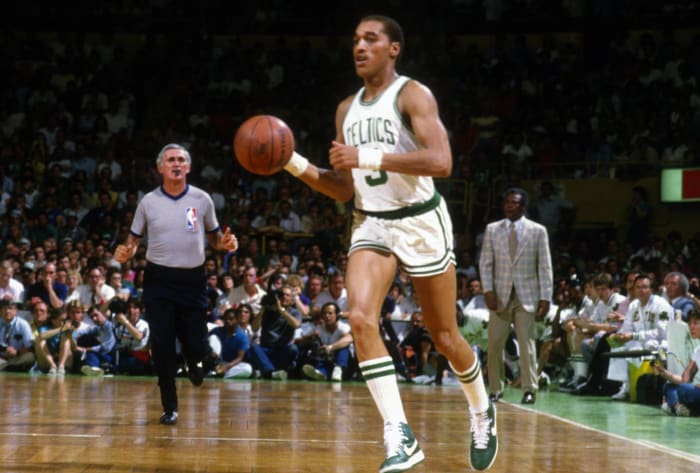
When Michael Jordan warned Danny Ainge, after a round of golf during the Bulls-Celtics 1986 playoff series, that he had “something” for Dennis Johnson in Game 2, he was putting a then five-time All-Defensive First Team honoree on notice that he was going to embarrass him in the Boston Garden — where the veteran point guard had already won one NBA title (to go along with the Finals MVP he’s earned with the champion Seattle SuperSonics in 1979)! Nobody dared disrespect DJ, whom Larry Bird would go on to call “the best I’ve ever played with," in such a brazen manner without eating their words. And yet there was nothing DJ, or anyone in a green uniform, could do to stop Jordan from hanging a playoff record 63 points on the Celtics (in what wound up being a win for the home team). For youngsters getting their first glimpse at some of these old-school players in “The Last Dance," this is now DJ’s legacy. It shouldn’t be. The Hall of Famer, whose No. 3 hangs in the Garden today, was one of the all-time greats.
Olden Polynice

Jerry Krause laid the foundation for the Bulls dynasty at the 1987 NBA Draft when he exchanged the eighth pick of the first round, Virginia center Olden Polynice, for the fifth pick, which belonged to the Seattle SuperSonics. The Sonics were a team on the rise in the Western Conference behind sharpshooter Dale Ellis, brawny tweener Xavier McDaniel and two-way small forward Derrick McKey. The Sonics determined their biggest need was a physically intimidating big man, so they traded back and acquired the 6-foot-11 Polynice for need. We’ll never know how much better this promising iteration of the Sonics might’ve been had they stuck with the best player available, Scottie Pippen. We do, however, know how it worked out for the Bulls. (Adding insult to injury, the Bulls had the option to swap picks with the Sonics in ’89, which netted them Iowa point guard B.J. Armstrong.)
Rory Sparrow
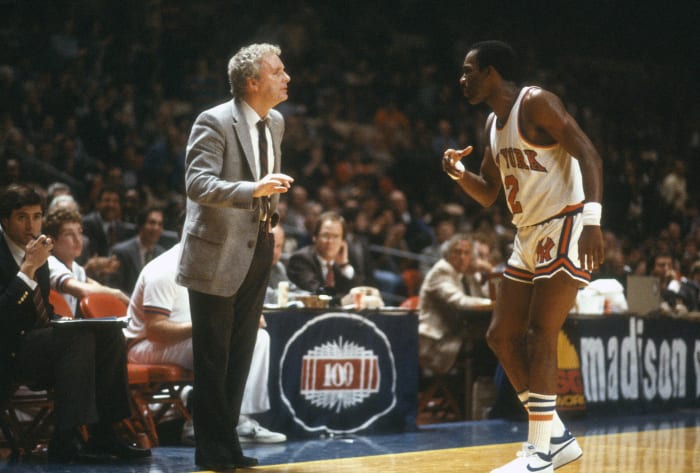
An honorary Jordanaire during the ’87-88 season, Rory Sparrow, unlike seemingly 90 percent of the NBA in the 1980s, had a sterling reputation as one of the league’s good guys. Sparrow’s longest tenure was with the Knicks, where he set up a foundation to help underprivileged New York City children. He also posted his best scoring and assists averages while playing for a rebuilding team with no plans for Sparrow in its long-term future. Sparrow made his way around the league throughout his 12-year pro career and was a welcome presence wherever he went.
John "Hot Rod" Williams
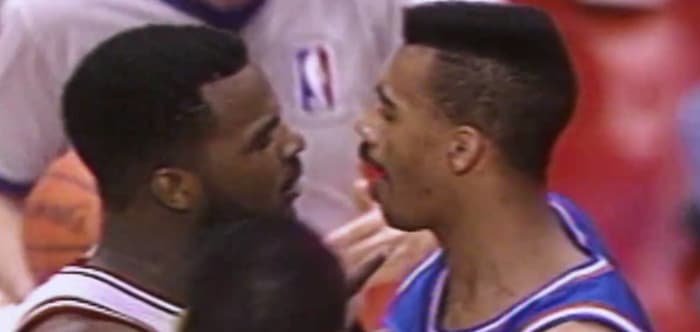
Briefly in “The Last Dance” we saw Charles Oakley conversing in a heated manner with the Cleveland Cavaliers’ John “Hot Rod” Williams after the latter delivers a hard foul on the "Windy City Christ Child." One of the best sixth-men of his era, Williams was a crowd favorite until Cavs GM Wayne Embry rewarded Hot Rod’s productive 1990 campaign with a shocking seven-year, $26.5 million contract. In terms of keeping the Cavs competitive with their top rival in the Eastern Conference, this signing and the ill-considered Ron-Harper-for-Danny-Ferry trade gave the Bulls an easier path to the Finals than they might’ve otherwise experienced.
Ron Harper
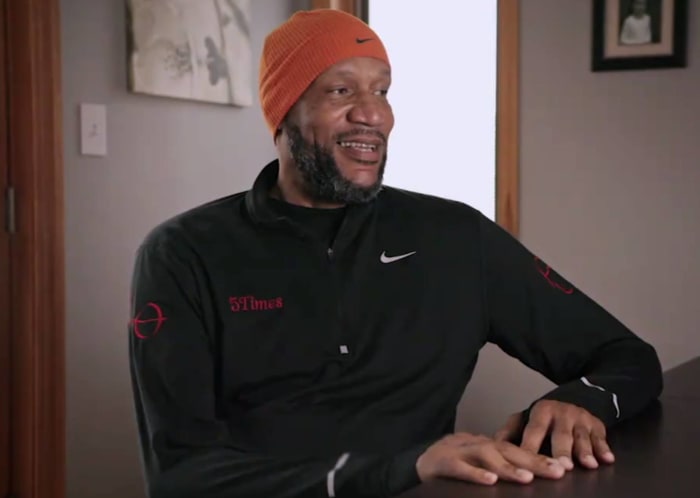
You know Ron Harper for his pesky perimeter defense and timely bench scoring during Jordan’s second three-peat, but did you know that when Harper was drafted eighth overall by the Cleveland Cavaliers in 1986, he was supposed to be the next Jordan? A jump-out-the-gym shooting guard whose already impressive two-way game was expected to become elite within a few seasons, Harper appeared to be on a decade-long collision course with Jordan as they battled to take their teams to the post-Bird and -Pistons Promised Land. After a magnificent rookie season, Harper was hampered by a severe ankle sprain in his second campaign and became more of a complementary star alongside a stellar starting lineup of Mark Price, Brad Daugherty and Larry Nance. The Cavs moved Harper to the Clippers in 1989 for the draft rights to Danny Ferry. Harper responded by playing the best basketball of his career until tearing his ACL midway through the season. Harper was still a fine player post-injury, but the highlight-reel athleticism had been curtailed. While you can’t help but wonder what might’ve been, what was (five NBA titles) is magnificent in its own right.
The Bad Boys

When the casual NBA fan thinks of Detroit’s Bad Boys, they tend to conjure up memories of Isiah “The Smiling Assassin” Thomas running the show from the point while paint-patrolling goons like Bill Laimbeer, Rick Mahorn and John “Spider” Salley undercut, clotheslined and slap-punched like the cheap-shot artists they were. Rodman was practically a model citizen compared to his frontcourt brethren, which also included 7-footer James “Buddha” Edwards, who generally lived up to his name save for the time he went upside Ed Nealy’s head in response to a hard foul . However, the guy you really had to watch out for was Joe Dumars, a proficient scorer and top-tier defender who wasn’t afraid to set a blindside screen or hurl an elbow into your nose, ribs, gut or junk.
Derek Strong

When a basketball caromed off the backboard, Dennis Rodman put on a physical display that, while not as elegant as a George Gervin finger roll or as vicious as a stanchion-bending Shaquille O’Neal dunk, epitomized the soul of the sport with a purity of hustle that left both old-schoolers and new-schoolers gasping in awe. You get to see the full range of this coach-crack effort in the slo-mo, Episode 3 shot where Rodman bangs with the Orlando Magic’s hefty big man Derek Strong for a rebound that seems perpetually out of reach until it’s inexplicably in The Worm’s grasp. As for Derek Strong, a Xavier standout who bounced around the league for a decade before heading to NASCAR: Thanks for the highlight!
Tree Rollins

At 7-foot-1, Wayne “Tree” Rollins made the most of his nickname by leading the league in block percentage during his first three seasons with the Atlanta Hawks. He was a solid, if unspectacular, rebounder for his size and was used largely as an intimidator when the 10-year veteran joined the Cavs in 1988. While he could still make most players think twice about attacking the rim, as we saw in “The Last Dance," Jordan and Pippen were not to be dissuaded.
Joey Crawford
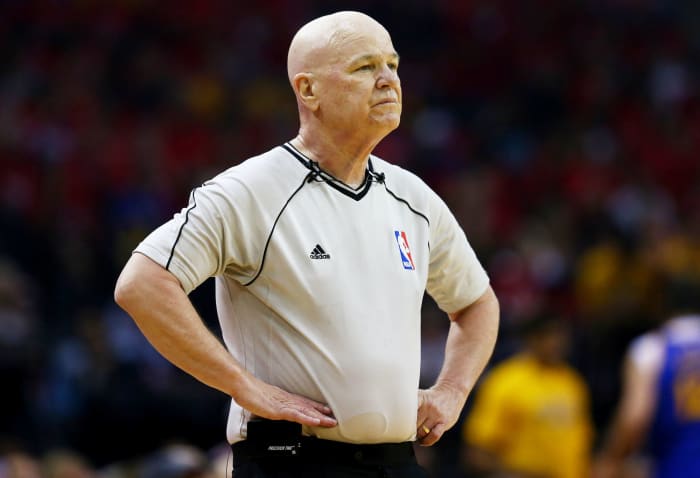
“Most of the time I see the s**t you do.” There wasn’t a more hot-tempered, generally hated NBA referee than Joey Crawford. He officiated games based on personal pique, was quick with game-altering technical fouls and once tossed Tim Duncan for laughing at him on the bench – at which point the diminutive ref challenged the 6-foot-11 superstar to a fistfight. (The league’s investigation of the incident resulted in the end of Crawford’s season.) While Crawford was just one of many officials who made life miserable for the admittedly volatile Dennis Rodman (to whom the above quote is snidely directed), few were as abrasive or disrespectful as the Havertown, Pennsylvania, native (as evidenced in the documentary).
Horace Grant
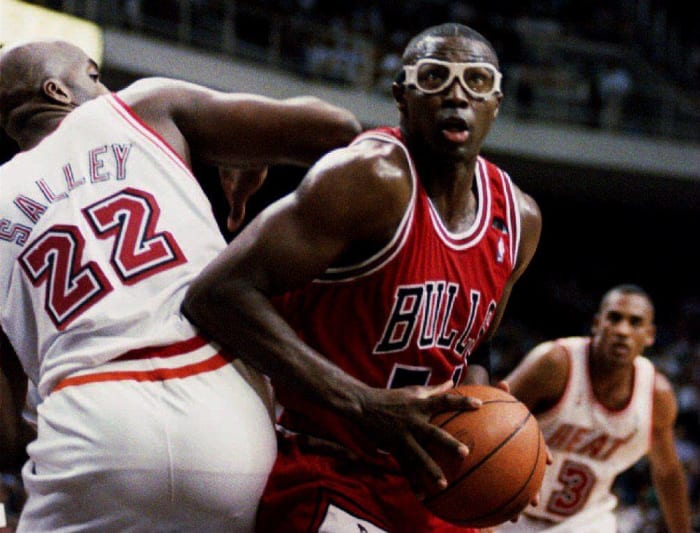
One-half of the workhorse frontcourt that banged and bruised the Bulls to their first three titles, Grant was an ACC Player of the Year for Clemson who probably felt a tad insulted with Virginia’s Olden Polynice was drafted two spots ahead of him in 1987. Jerry Krause settled that potential conflict to the Bulls’ extreme benefit, and, along with center Bill Cartwright, Grant gave teams fits in the paint. Grant was close to a guaranteed double-double throughout Jordan’s first three titles. His defensive prowess earned him four NBA All-Defensive Second Team honors. He wasn’t Dennis Rodman on the boards, but he got the job done.
Bill Cartwright
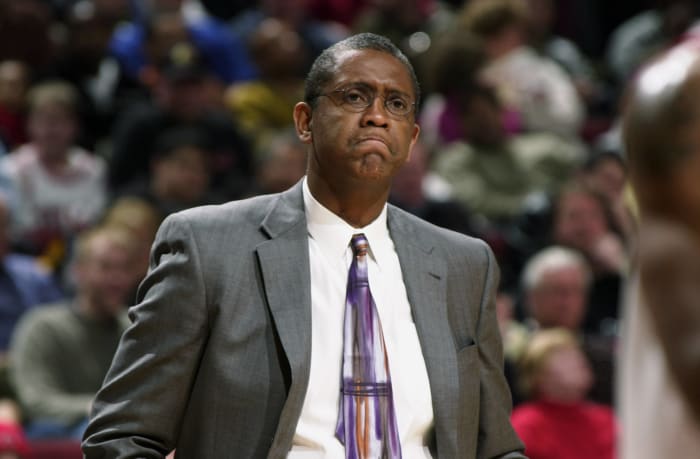
Michael Jordan was none too pleased when, in 1988, Jerry Krause traded his friend and on-court enforcer, Charles Oakley, to the New York Knicks for center Bill Cartwright. The veteran Cartwright was clearly in decline, but he was still a steady presence in the middle and, in Krause’s view, a good mentor for the up-and-coming Grant. Jordan was, of course, furious, and, depending on who’s telling the story, never entirely forgave Krause for shipping out his buddy without a heads up. (They learned of the trade on the way to a Tyson fight.) According to Sam Smith’s “The Jordan Rules," the star took out his frustrations by exploiting Cartwright’s pass-catching weaknesses in practice. This display couldn’t have looked any uglier than Cartwright’s jumper, but the big man was an integral part of those first three titles, while Oakley’s title count is currently at zero. Please don’t tell him I said that.
Craig Ehlo

Everyone knows the shot, but thanks to “The Last Dance” they now know about the shot before “The Shot." With six seconds left on the clock in the decisive, back-and-forth Game 5 of the first-round series between the Bulls and the Cavs, Craig Ehlo inbounded to Larry Nance for a perfectly executed give-and-go that put the Cavs up one with three seconds left. Ehlo, in his sixth year out of Washington State, had become a fan favorite in Cleveland due to his “human bruise” style of competing. A good defender and fundamentally sound all-around player, Ehlo had played well in the series; however, in the closing seconds of an elimination game, where your opponent has the most dangerous scorer in the league, you might want to put your best defender on him (aka Ron Harper). Cavs coach Lenny Wilkins stuck with Ehlo, who kept a hand in Michael Jordan’s face as he drained the game-winner from 12 feet.
Red Holzman
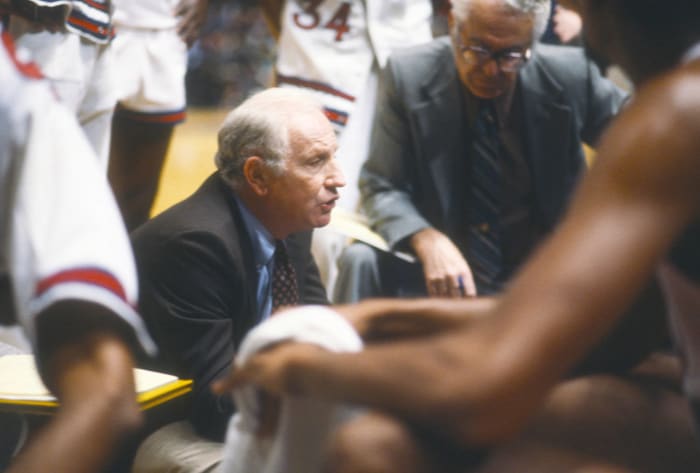
Phil Jackson found his first coaching mentor as a member of the two-time NBA champion New York Knicks in the early 1970s. When Jackson sat out the 1969-70 season with a back injury, Holzman took the North Dakotan power forward under his wing and taught him the basics of managing talents and egos, which would be integral to his successes with the Bulls and the Lakers. Knicks fans always believed Jackson would finish his career with the team out of respect to the late Holzman, and he did, disastrously, as team president. In Jackson’s defense, even his mentor would’ve struggled under the heavy hand of James Dolan.
Charley Rosen

Sportswriter Charley Rosen has been tight with Phil Jackson since assisting the latter with the Albany Patroons of the Continental Basketball Association. No one can doubt Rosen’s love for the basketball: He’s written 16 books about the game and has knocked around from print publications to websites for nearly 50 years. It’s also impossible to deny he has a fanatical devotion to Jackson that often clouds his judgment. Sometimes he looks like a fool, as when he declared, “The best [LeBron] James can ever be is an average player.” Rosen continued his battle against LeBron for many years, constantly comparing him to the Chicago superstar that led his pal to six titles. He was once insightful, and still gets work, but no one takes him seriously anymore.
Scott Burrell

Poor Scott Burrell will forever be known as “Dennis Rodman Jr.” after the fourth episode of “The Last Dance," wherein Michael Jordan not only goofs on his teammate’s penchant for nightclubbing, but, when asked by Burrell to ease up for fear his parents will one day see this video, also looks straight into the camera and says, “Mom, dad, your son’s an alcoholic.” In case you’re wondering, Burrell appears to have grown out of his alleged partying (later in the documentary, Jordan semi-regrets pushing him too hard, saying, "He's such a nice guy). He spent the 2010s making his way up the college coaching ranks and is currently running the men’s basketball program at Southern Connecticut State University. Also, Burrell’s real legacy should be throwing a perfect full court pass to Tate George for Connecticut's last-second, game-winning shot against Clemson in the 1990 NCAA Tournament.
The 1998 Eastern Conference All-Stars

Episode 5 opens with Jordan consenting to a photo op with his fellow 1998 Eastern Conference All-Stars, which depicts both a changing of the guard and a last hurrah. For reasons related to age, injury or, in one case, diet, this would be the final All-Star appearance for Anfernee Hardaway, Tim Hardaway, Glen Rice, Rik Smits, Steve Smith, Jayson Williams and Shawn Kemp. Noticeably absent in this group is Allen Iverson, who, despite being one of the top scorers in the league, wouldn’t make his first All-Star team until 2000. The entire team, including Jordan, seemed destined to leave the games in the old millennium. This was tragically the case for the Detroit Pistons’ Grant Hill, who was arguably the best all-around player in the NBA at the time. Injuries would knock him out of the game for several seasons. When he returned, he was half the player he used to be.
Allan Houston

The star of the most unwatchable New York Knicks team during the most unwatchable, low-scoring stretch of basketball in NBA history, Allan Houston is probably best remembered for signing a six-year, $100 million contract extension and suffering a career-ending knee injury two seasons later. The contract was so onerous that the league created an “Allan Houston rule," which allowed teams a one-time opportunity to clear a bad contract from their salary cap space. As for Houston the player, he could average 20 points-per-game in a good season. But, as “The Last Dance” proves, he could not stay in front of Michael Jordan during the 1997-98 season, not even when MJ’s feet were bleeding.
B.J. Armstrong

After four spectacular years at the University of Iowa, the 6-foot-2 floor general landed on a playoff-ready Chicago Bulls team in 1989 and proved immediately valuable — first as a bench player for the first two titles and then as a starter during the 1992-93 season. Armstrong was the perfect point guard for Jordan’s Bulls in that he was OK with his main contributions not showing up in the stat sheet. He averaged 12 points and four assists his final year alongside Jordan, and, most importantly, didn’t annoy off the GOAT (that is, until he was on the Hornets). He was one of the most candid interviews in “The Last Dance," admirably backing up Horace Grant when everyone tries to blame him for being Sam Smith’s primary source on “Jordan Rules."
Christian Laettner

He’s barely in the “The Last Dance," but just seeing Christian Laettner, the smirking epitome of Duke superiority, rubbing shoulders with the first Dream Team in 1992 when everyone knows that the “collegiate” selection should’ve been LSU’s Shaquille O’Neal irks to this day. Though he’s one of the most hated players to wear a Blue Devils uniform, you’d have to be unreasonably bitter (e.g. a North Carolina fanboy) to deny Laettner props for having knocked down two of the most clutch shots in NCAA history. There was a case to be made that he’d earned his spot on the Dream Team, but getting to see a just-out-of-college Shaq run with Jordan, Bird, Magic and so on would’ve been heavenly.
Toni Kukoč

It wasn’t enough that Toni Kukoč hailed from war-torn Yugoslavia. The long and exceptionally skilled 6-foot-11 small forward had the awful misfortune of being liked by Bulls GM Jerry Krause, which, in 1992, meant he was in for a hellish degree of hazing from the He-Man Krause Haters Club (i.e. Michael Jordan and Scottie Pippen). The internationally televised stage for Kukoč’s initiation was the 1992 Barcelona Olympics, and the 23-year-old took his drubbing like a man. Jordan and Pippen eventually accepted the Croatian as a valuable component of their second three-peat, which included Kukoč taking home the 1996 Sixth Man of the Year award.
Harvey Gantt

Unlike Muhammad Ali or LeBron James, Michael Jordan steadfastly refused to use his sports superstardom to champion political or social justice causes. Given that he peaked during the Bill Clinton era, his political presence wasn’t absolutely required on the national stage. But in his home state of North Carolina, Jordan’s endorsement of African-American U.S. Senate candidate Harvey Gantt could’ve tilted the race in the Democrats’ favor over longtime Republican nemesis Jesse Helms. When asked why he refused to endorse Gantt, Jordan famously replied, “Republicans buy sneakers too.” Jordan claims in “The Last Dance” that this was said in jest, but it hardly matters. Regardless of how you feel about it, Jordan’s legacy continues to be apolitical.
Randy Brown

All due respect to Randy Brown, but there’s really no reason anyone other than a die-hard Chicago Bulls fan should remember the backup point guard out of New Mexico State fondly. That all changed during the fifth episode of “The Last Dance” when Brown was seen groveling for a game ticket from Michael Jordan during the 1997-98 season. After Brown jokes that he’ll take a seat next to “God," Jordan fires back, “You just got one from him.” When you got it like that, you can get away with talking deific trash like that.
Will Perdue

This 7-foot-1 center was one of the best college players in the country during his last couple of years at Vanderbilt, but he struggled to find meaningful minutes with the Bulls during the 1991-93 title run. Aside from Jordan decking him during a practice (per Sam Smith’s “Jordan Rules”), Perdue was apparently a solid teammate. He came close to hanging on for the second three-peat but was shipped out to San Antonio in the trade that brought Dennis Rodman to Chicago. Don’t cry for Perdue: He won his fourth championship ring with the 1999 Robertson/Duncan Spurs.
Terrell Brandon

Blink and you might miss Terrell Brandon’s No. 11 Cavs jersey stray across the screen during a mid-‘90s contest with the Chicago Bulls. Sports Illustrated declared Brandon “The Best Point Guard in the NBA” just as he was giving the Cleveland squad new life in their Ahab-esque quest to harpoon its hardcourt tormentor of nearly a decade. The Cavs had transitioned into a grind-it-out defensive unit comprised of low-scoring hustlers like Chris Mills, Tyrone Hill and the late Bobby Phills. They could’ve made life miserable for the Bulls in Jordan’s last run but chose instead to make life miserable for themselves by trading Brandon for Shawn Kemp.
John Starks
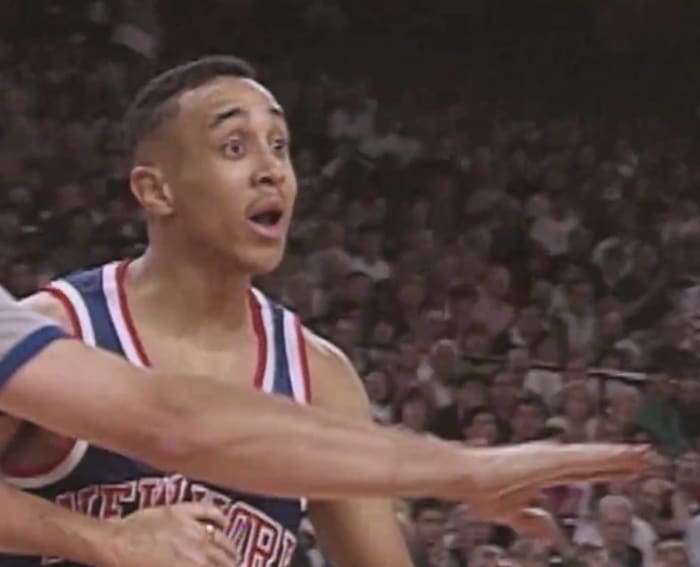
If not for a dirty play in practice that left him with a sprained knee, the undrafted John Starks might not have been the Knicks’ hardnosed near-savior throughout the 1990s. (By the time he healed up, the team couldn’t cut him). The injury in question came courtesy of team leader Patrick Ewing, who wound up needing Starks’ take-on-the-world toughness as the Knicks gave the Bulls an Eastern Conference Finals scare in 1993 and competed for a title against the Houston Rockets in 1994. There was no beauty to Starks’ game. He was like a DJ Premier beat come to life: spare and unsparing. And he posterized MJ at his prime. Starks was bad, man.
Anthony Mason

Throw out the stats, and ask anyone who played against Anthony Mason in his prime: “The Working Man” could do it all. The undersized Tennessee State power forward, who bounced around the CBA and USBL before catching on with the Knicks in 1991, was a punisher in the paint and a nightmare on the defensive end. He won the Sixth Man of the Year Award in 1995, made the NBA All-Defensive Second Team in 1997 and earned a surprise All-Star honor with the Miami Heat in 2001. The Knicks were Patrick Ewing’s team in the 1990s, but his supporting cast was far more interesting.
Charles Smith

We’re not talking about the former Georgetown standout who was convicted of vehicular manslaughter in 1992 and shot twice in his Maryland home in 2010. This Charles Smith was a force at Pittsburgh in the 1980s before logging four productive years as a starter with the Los Angeles Clippers. Smith was a solid pro. Alas, he’ll always be remembered for failing to give the Knicks a 3-2 lead in the 1993 Eastern Conference Finals by having his shot bothered and blocked by the triumvirate of Pippen, Jordan and Grant. David Aldridge calls it “One of the great defensive sequences of all time.” Smith probably calls it Hell.
Dan Majerle

A three-time All-Star and one of the greatest players to come out of the Mid-American Conference, Central Michigan alum Dan Majerle was an integral piece of the Charles Barkley-led Phoenix Suns that gave the Chicago Bulls what might be their biggest NBA Finals scare. But for an uncovered John Paxson in Game 6, the Jordan Bulls would’ve faced their first and only Game 7. The teams were so evenly matched that it should’ve happened. Unfortunately, Jordan found out that Jerry Krause thought highly of Majerle’s defense, which gave the prideful superstar the mental ammunition he needed to decimate the poor Suns.
Keith Van Horn

The 1997-98 New Jersey Nets were the sacrificial first-round lambs to the three-peat hungry Chicago Bulls, but the Meadowlands Continental Airlines Arena faithful had reason to be optimistic about the future thanks to Keith Van Horn. The prolific scoring forward out of Utah was the second-overall pick in the 1997 draft and played like a seasoned pro in his rookie season. (He was a unanimous Rookie of the Year runner-up to the unanimous winner, Tim Duncan.) He averaged a career-high 21.8 points-per-game his second season, which led some delusional Nets fans to declare him the next Larry Bird. Unfortunately, he was a poor passer and defender for his position, and that never really changed.
Jud Buechler
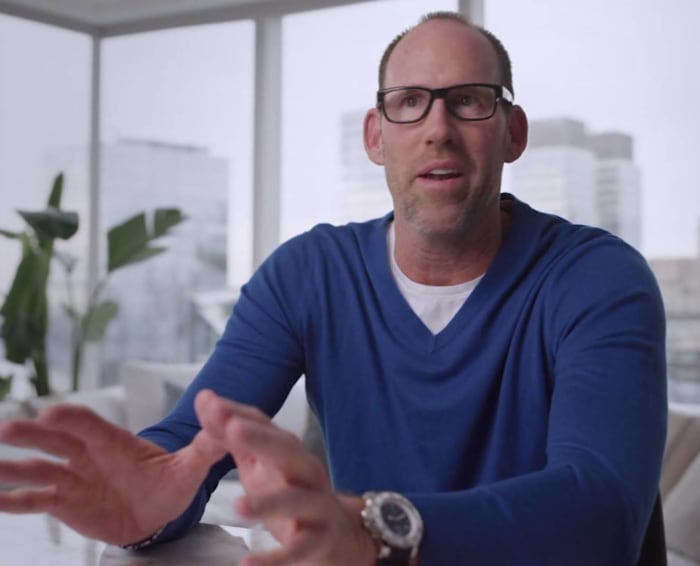
A four-year standout at the University of Arizona, Jud Buechler’s NBA ceiling was, at best, a solid rotation player. Despite a paucity of athleticism and a less-than-dazzling skill set, Buechler hung on for 11 seasons and averaged around nine minutes per game during the Chicago Bulls’s 1996-98 three-peat era. Though he was terrified by Jordan (“we were his teammates, and we were afraid of him.”) and considered the weakest player on the team, he stuck it out and has three rings to show for it.
Gerald Wilkins

Dominique Wilkins’ younger brother had put in seven solid years with the New York Knicks when he signed with the Cleveland Cavaliers in 1992 to provide them with hard-nosed defense and scoring punch from the wing, which they’d lacked throughout their years of playoff contention with Mark Price, Brad Daugherty and Larry Nance. Wilkins was also known for making Michael Jordan work a little harder on offense than other defenders, which led to someone regrettably dubbing him “The Jordan Stopper." If this sounds like a story worthy of “The Last Dance," well, it might’ve been had Jordan not embarrassed his alleged vanquisher in the 1993 playoffs. The only time we see Wilkins in the doc is when the Cavs are getting swept by the Jordan-less 1994 Bulls. How’s that for disrespect?
Nick Anderson

This being the Michael Jordan documentary, we only get to see the Orlando Magic’s Nick Anderson stealing the ball from His Airness and scoring the game-winning bucket in Game 1. Yes, Jordan avenged the slight with a 32-point explosion in Game 2, but the Magic won the series and went on to face the Houston Rockets in the 1995 NBA Finals. That’s where it all fell apart for Anderson. Ever since taking Illinois to the brink of the NCAA Finals in 1989, Anderson seemed destined for a breakthrough. His moment came late in Game 1 against the Rockets, where Anderson had to hit only one free throw to put the Magic’s three-point lead out of reach. Though he shot 70 percent from the line, Anderson bricked four straight freebies, which led to a Kenny Smith three-pointer and a Game 1 loss. Anderson acquired the nickname “Nick the Brick," and it got into his head to the extent that he shot a godawful 40 percent from the line two seasons later.
Bobby Phills

Bobby Phills was one of the great feel-good stories of the late-‘90s NBA. A late-second-round pick out of Southern in 1991, Phills put in two seasons with the CBA’s Sioux Falls Skyforce before catching on with the Cleveland Cavaliers in ’93. Within two seasons, the hard-working Phills went from garbage-time toiler to starter as a valuable three-and-D specialist. He found his home in 1997 with the Charlotte Hornets, where he was one part of a tough defensive backcourt with David Wesley. Though BJ Armstrong is portrayed as the Hornet hero of Game 2 against the Bulls in ’98, the only reason that game was in reach was Phills’ defense on Jordan. And unlike many players in “The Last Dance," Jordan respected Phills, calling him the toughest defender he ever faced. Phills’ career was cut tragically short in 2000 when he was killed in a car wreck.
LaBradford Smith

Here’s what “The Last Dance” didn’t tell you about LaBradford Smith: The Washington Bullets 19th pick out of Louisville was in his second year when he made the mistake of lighting up Michael Jordan for 37 points. While it’s true that the Bullets were absolute garbage during this period, Smith had put together a string of nice games late in the ’93 season, suggesting that the 6-foot-3 shooting guard who rarely shot from three (and shot poorly when he did) might have a place in the NBA. Then Jordan decided to make up a personal slight and destroy the youngster on national television. The Bullets waived Smith the following season. He finished out his career in the CBA and overseas.
Shawn Bradley
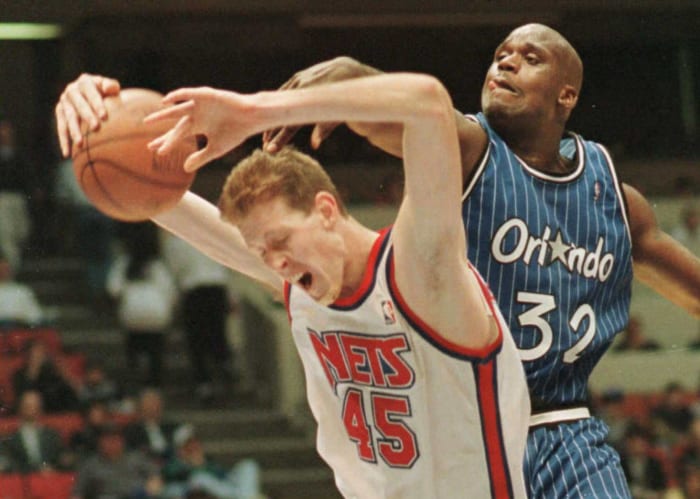
The NBA has had its share of physical freaks throughout the years, but Shawn Bradley was different. At 7-foot-6 he could swat shots with ease, but after one year at BYU it was clear that Bradley had enough raw athleticism to develop into a valuable NBA player, if not a star. After putting in two years of missionary work per his Mormon beliefs, Bradley was drafted by the Philadelphia 76ers, and the project to transform the towering young man into a first-rate center began. Though he was a shot-blocking machine throughout his career, he could never rebound or score consistently enough to produce at the rate his position required. His size made him a valuable role player for years after his prime, but for a generation of basketball fans he’ll always be best known for his appearance in “Space Jam."
Shawn Kemp

Gary Payton is the face of the 1996 Seattle SuperSonics NBA Finals team because Gary Payton wouldn’t have it any other way. But that team was a joy to watch because of its other superstar, Shawn Kemp. Nicknamed “Reign Man," Kemp was drafted out of high school and didn’t blossom until his second season in the league. He was a double-double machine and a six-time All-Star, but it was his thunderous dunks, often served up by Payton, that made him one of the most popular players in the league. It’s strange to list him here, but after two terrific seasons in Cleveland, he fell off a cliff physically and statistically. His weight ballooned, and his skills rapidly diminished. One year he started all 82 games for the Cavs, averaging 18 ppg and 8.8 rpg; then he went to Portland and could barely get off the bench. (His averages plummeting to 6.5 ppg and 3.8 rpg.)
The Davis Brothers

Reggie Miller was a spindly scoring machine during the Indiana Pacers title-contending years, which, during the 1990s, necessitated bulk and toughness at just about every other position. On the inside, from 1993 to 1999, he had Dale Davis and Antonio Davis, nicknamed “the Davis Brothers” even though they were not related. The Georgia born-and-bred Dale was the more effective of the two, a double-double threat throughout his prime, and a starter for most of his eight-year tenure in Indiana. Oakland-native Antonio was essentially the same player, and despite his bench role with the Pacers, racked up close to the same stats. They even made the same number of All-Star teams (one). When he was traded to the Raptors in 1999, Antonio became a starter and put up the best numbers of his career.
Luc Longley

The prime beneficiary of Michael Jordan’s return in 1995 was Australian-born Luc Longley, a 7-foot-2 center out of the University of New Mexico who hadn’t lived up to his All-Star potential after being drafted seventh overall by the Timberwolves in 1991. He initially put up the same anemic stats when traded to Chicago in 1994 but turned out to be the kind of smart, fundamentally sound player who jibes well with Jordan. (You rarely, if ever, see MJ crawling up Longley’s behind throughout the 10-part documentary, which is saying a lot.) He was a starter on Jordan’s last three championship teams, posting highs in scoring, blocks and assists.
Bryon Russell

Bryon Russell (pictured to MJ's immediate right) is the kind of underdog player fans love. Drafted 45th out of non-power Long Beach State in 1993, he struggled his first few years in Utah before finding his place as a defense-minded role player. His cockiness endeared him to his teammates but didn’t wear well with Michael Jordan. Russell sowed the seeds of his doom when he trash-talked MJ during the latter’s brief baseball career. He told Jordan he was bummed he never got to defend him. Russell not only got his chance, but he’s also now immortalized in one of the most iconic sports photos of all time: watching helplessly as Jordan hoists the Finals-winning shot in 1998.
Jeremy Smith is a freelance entertainment writer and the author of "George Clooney: Anatomy of an Actor". His second book, "When It Was Cool", is due out in 2021.
More must-reads:
- Bradley Beal is adamant about one thing after Suns fall behind 3-0
- Three stars from Friday's NBA playoffs
- The 'Most points in a playoff game by team' quiz
Breaking News
Customize Your Newsletter
 +
+
Get the latest news and rumors, customized to your favorite sports and teams. Emailed daily. Always free!
Use of this website (including any and all parts and
components) constitutes your acceptance of these
Terms of Service and Privacy Policy.

